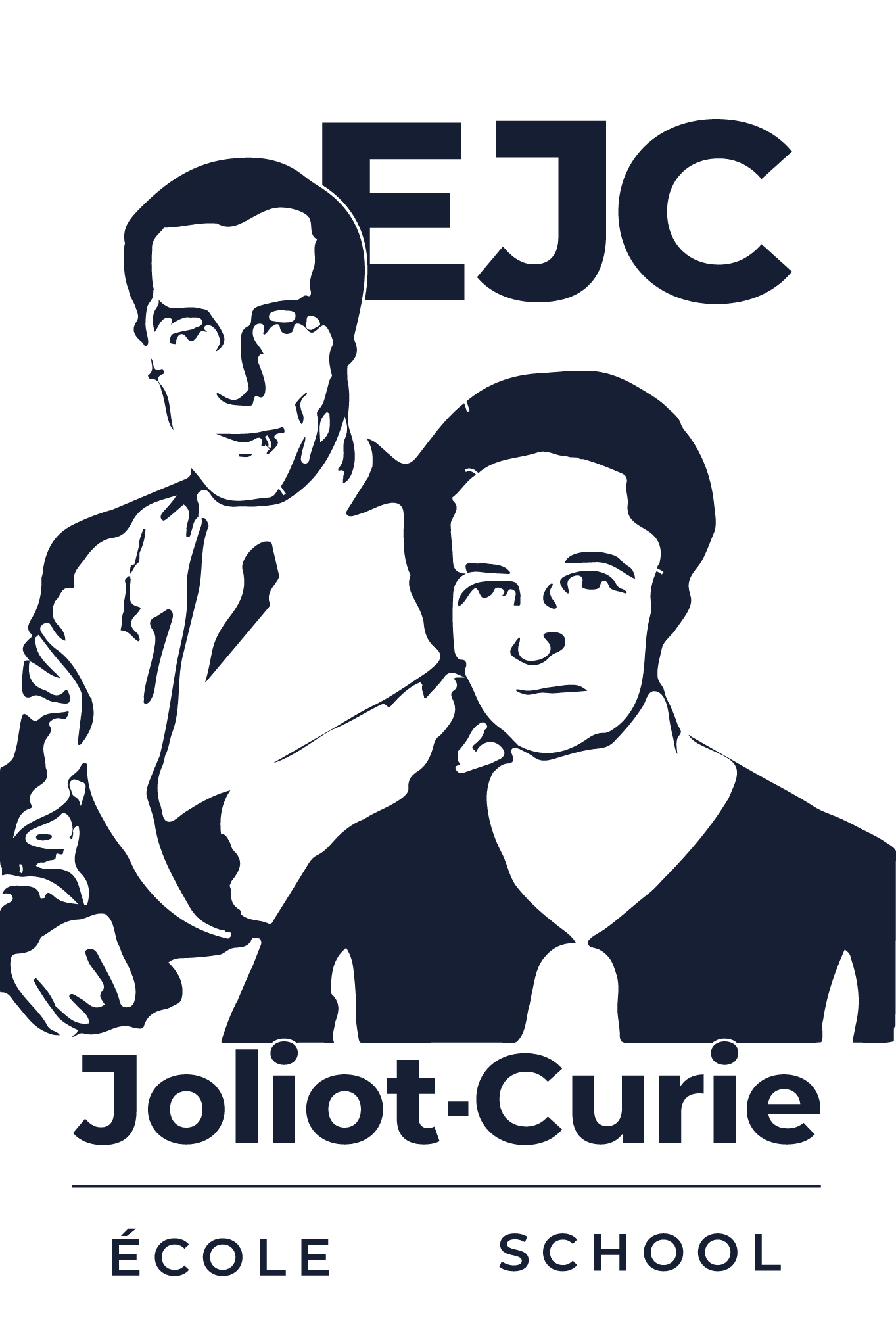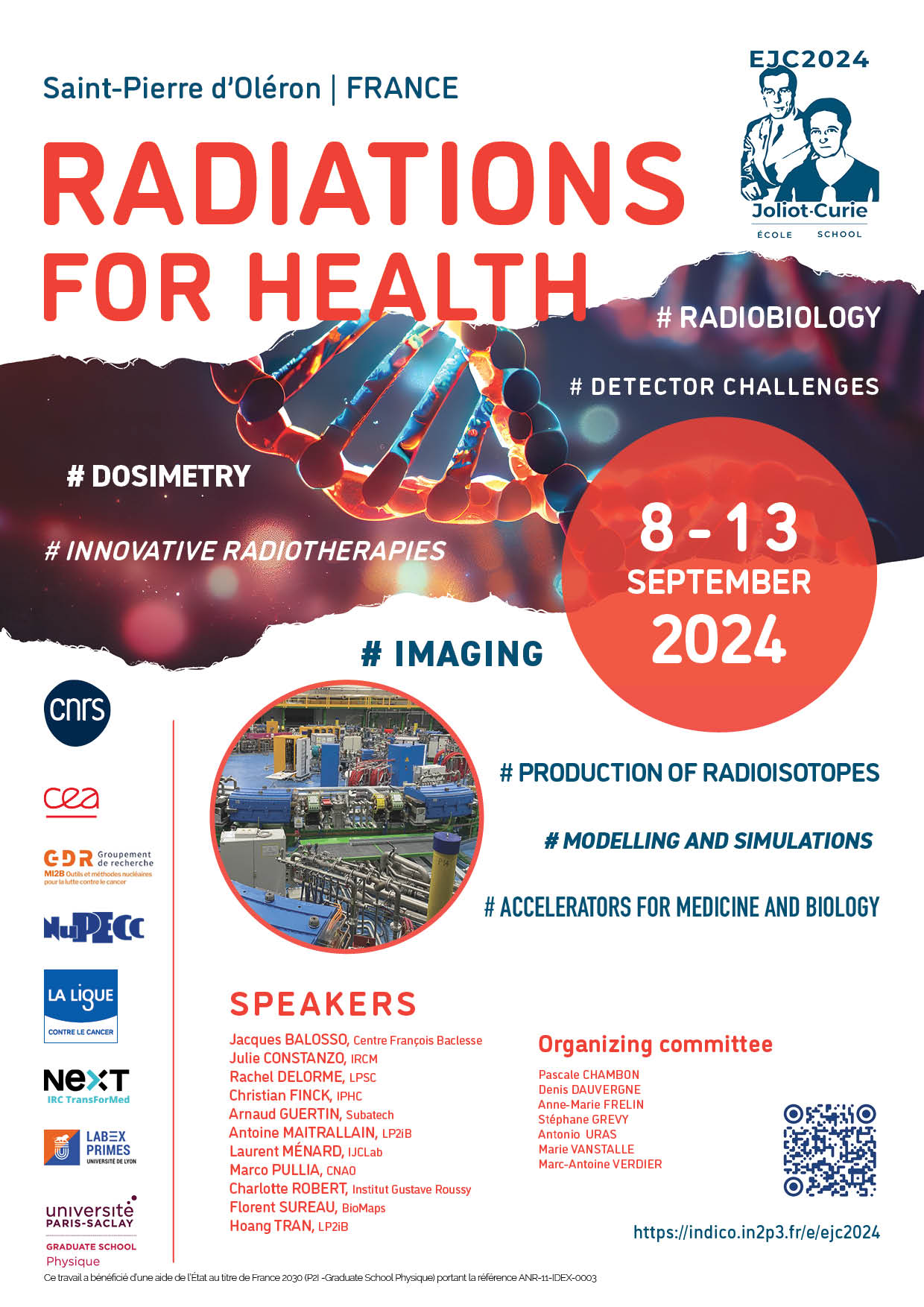SCHOOLS SINCE 1982
2024
Radiations fors health
The Joliot-Curie School (EJC) is active since 1981, annually training young doctoral students, post-doctoral fellows and researchers, in the scientific advancements achieved in the fields of nuclear physics, particle physics, and astrophysics.
The 2024 edition of the School will be an opportunity to explore the theme of healthcare applications of subatomic physics, 20 years after the 2004 edition « Radiation and Life ». Within the CNRS, these research efforts are led by the GDR (groupement de recherche) MI2B, which gathers researchers from IN2P3, INSB, and other CNRS institutes, as well as some teams from Inserm, IRSN, and CEA. Another important challenge of the EJC is a broader multidisciplinary opening to the nuclear physics, high-energy, and astroparticle physics communities, aiming to spark or motivate scientific interest in societal fields. Generating this interest among a pool of young researchers is essential for fostering ambitious common projects in a collaborative framework afterward.
We are currently experiencing a paradigm shift in radiotherapy with the emergence of innovative approaches such as hadron therapy, alpha vectorized internal radiotherapy, Boron Neutron Capture Therapy based on accelerators, the use of mini- and micro-beams for spatial dose fractionation with electrons, protons, or photons, and high-dose-rate delivery modalities (FLASH therapy). New challenges are arising in nuclear and X-ray imaging to improve image quality (sensitivity, efficiency, resolution, specificity, quantification). To address these methodological and instrumental challenges, physicists are adapting detection techniques used in other areas of IN2P3 or CEA-IRFU to enhance spatial, energy, and temporal resolution of detectors as well as their counting capability, data acquisition, and processing, particularly through artificial intelligence.
The development of new radioisotopes motivates intense efforts with applications on diagnostic imaging and therapy, or both (theranostics), involving specialties in accelerator physics, nuclear physics, and radiochemistry. This research is closely linked to fundamental research in radiobiology, both for understanding and improving the efficacy of radiotherapies, and for enhancing molecular imaging (identification and quantification of specific markers). All these themes rely on significant multi-scale simulation and modeling work, involving state-of-the-art computing tools at IN2P3.
Addressing the aforementioned challenges must be done through an integrated and multidisciplinary approach, combining a general understanding of innovative radiotherapy modalities, radiobiology, imaging, radiochemistry, knowledge of accelerators for therapy and radioisotope production, appropriate irradiation and detection techniques, and simulation tools such as Geant4-DNA and GATE covering the entire spectrum of these thematics. The main objective of such a multidisciplinary approach is to enable physicists to better understand the needs and methodologies of clinicians, medical physicists, and biologists, so that they can undertake collaborative research programs. Indeed, physical concepts such as dose, taken alone, do not predict the therapeutic efficacy of innovative radiotherapy, for which a multidisciplinary and multi-scale approach is necessary. Similarly, physicists’ contribution to imaging techniques must incorporate clinical constraints and integrate the chemical and biological components of radiopharmaceuticals. Finally, modeling, and its application in simulation tools, reflects the level of understanding of the effects of the physical, chemical, and biological processes involved.

